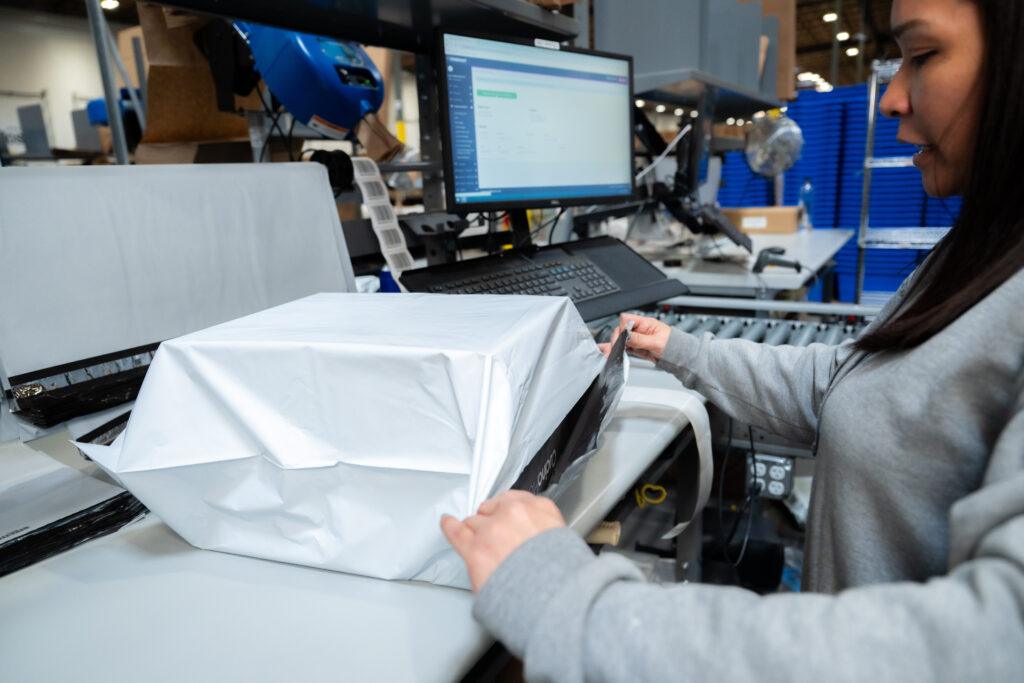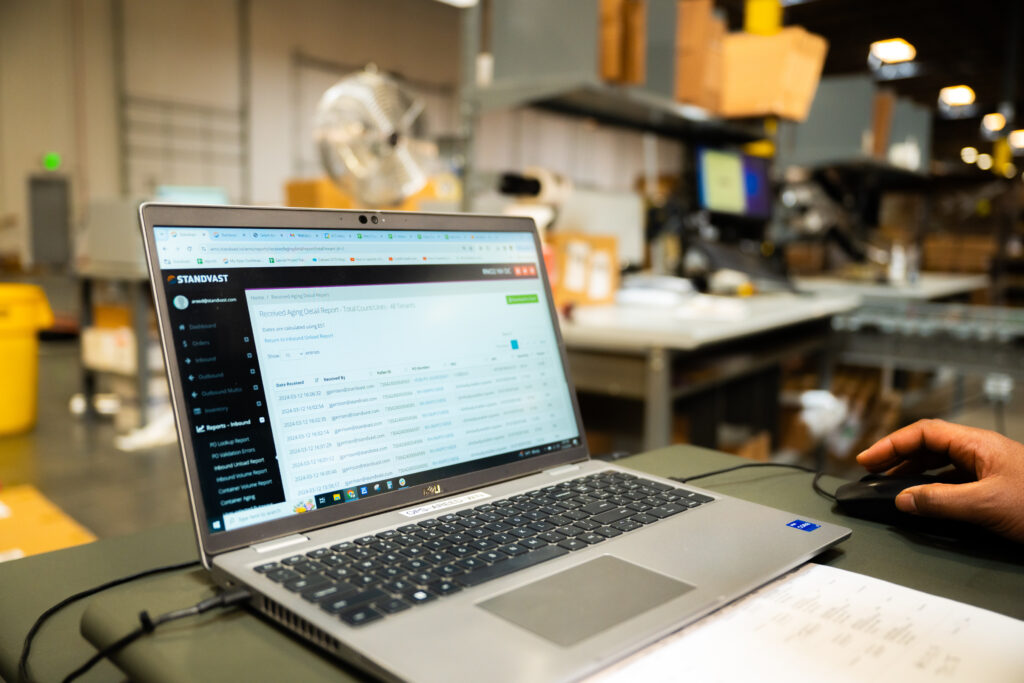Retail businesses are navigating dynamic shifts and advancements, propelled by the ever-changing commerce landscape. Amidst this evolution, unified commerce emerges as a new guiding principle, revolutionizing how retailers interact with customers. Unified commerce transcends traditional multichannel and omnichannel approaches, integrating diverse sales channels into a seamless ecosystem. This customer-centric evolution emphasizes delivering unified and personalized experiences across all touchpoints. Central to this paradigm shift is fulfillment and logistics, acting as the backbone of unified commerce.
A Paradigm Shift in Retail Strategy
At its essence, unified commerce represents a comprehensive approach to retail operations, where various sales channels and touchpoints converge seamlessly to create a cohesive and personalized shopping experience.
Central to the concept of unified commerce are its defining components, which include the integration of online and offline channels, centralized data management, and real-time inventory visibility. In contrast to traditional multichannel and omnichannel approaches, which often operate in silos, unified commerce breaks down these barriers, facilitating a fluid and interconnected customer journey.
Unlike multichannel strategies that focus on providing multiple sales channels independently and omnichannel strategies that strive for channel integration, unified commerce transcends mere integration. It embodies a customer-centric ethos, where the primary goal is to meet individual shoppers’ evolving needs and preferences.
This shift towards a customer-centric retail model signifies a departure from transactional relationships and toward meaningful engagement and personalized experiences. Unified commerce empowers retailers to anticipate customer demands, tailor offerings accordingly, and foster long-term loyalty and satisfaction. Essentially, it’s not just about selling products but about creating memorable and seamless journeys for every customer.
The Impact of Unified Commerce on Customer Expectations
The emergence of unified commerce has revolutionized customer expectations, ushering in a new era of seamless shopping experiences. With the integration of various channels and touchpoints, customers now demand more than ever in terms of speed, transparency, and convenience.
Rising Expectations for Seamless Shopping Experiences
Unified offers customers a seamless journey across various channels and touchpoints. In this interconnected ecosystem, shoppers expect a consistent and frictionless experience, regardless of how, when, or where they interact with a brand. Whether browsing online, making a purchase via a mobile app, or visiting a brick-and-mortar store, customers anticipate a cohesive and integrated journey that reflects their preferences and past interactions. As such, retailers must prioritize seamless integration and connectivity across all channels to meet these heightened expectations.
Demand for Speed, Transparency, and Convenience
In the age of unified commerce, speed, transparency, and convenience reign supreme. Customers crave swift and efficient transactions, from browsing products to completing purchases and receiving deliveries. They expect real-time updates on order status, shipment tracking, and inventory availability, enabling them to stay informed and empowered throughout the shopping journey. Furthermore, convenience has become a non-negotiable aspect of the customer experience, with shoppers seeking frictionless processes, such as one-click purchasing, easy returns, and flexible delivery options. For context, 90% of US shoppers demand 2-day shipping. Retailers must prioritize speed, transparency, and convenience in their operations to align with these evolving expectations. Once they do, retailers will be rewarded with 44% higher conversion rates.
The Role of Personalization in Customer Satisfaction
Personalization lies at the heart of customer satisfaction in unified commerce. Shoppers seek tailored recommendations, relevant promotions, and customized experiences that resonate with their preferences, interests, and behaviors. Through data-driven insights and advanced analytics, retailers can leverage customer data to deliver personalized interactions at every touchpoint. Whether through targeted marketing campaigns, product recommendations, or personalized offers, personalization enhances customer engagement, loyalty, and satisfaction. By understanding and anticipating individual needs and preferences, retailers can forge deeper connections with customers and foster long-term relationships built on trust and loyalty.
The Central Role of Fulfillment and Logistics in Unified Commerce
Unified commerce hinges on the seamless integration of various channels and touchpoints, with fulfillment and logistics serving as the backbone of this interconnected ecosystem. These critical functions play a central role in ensuring that customers receive their orders efficiently and reliably, regardless of how they choose to shop. Let’s explore the significance of fulfillment and logistics in unified commerce and strategies for optimizing these processes to meet customer expectations.
Importance of Real-Time Inventory Visibility
One of the key challenges in unified commerce is maintaining real-time inventory visibility across all channels. Customers expect accurate and up-to-date information about product availability, regardless of where they choose to shop. Real-time inventory visibility enables retailers to prevent stockouts, avoid overselling, and fulfill orders promptly, thereby enhancing customer satisfaction and loyalty. By implementing advanced inventory management systems and leveraging technology solutions, retailers can achieve real-time visibility into their inventory across all channels, enabling them to optimize stock levels, allocate resources efficiently, and fulfill orders accurately and on time.
Customers anticipate precise and current details on product availability, no matter where they shop.
Streamlining Fulfillment Processes
To meet the high expectations of customers in unified commerce, retailers must streamline their fulfillment processes to improve efficiency, accuracy, and speed. This involves optimizing warehouse operations, automating repetitive tasks, and adopting best practices in order management and fulfillment. By implementing advanced technologies such as warehouse management systems (WMS), order management systems (OMS), and automation solutions, retailers can streamline fulfillment operations, reduce errors, and accelerate order processing and delivery times. Additionally, adopting flexible fulfillment strategies such as ship-from-store, click-and-collect, and third-party logistics (3PL) partnerships can help retailers meet customer demands for fast and convenient delivery options while optimizing inventory utilization and reducing shipping costs. By prioritizing efficiency, accuracy, and customer-centricity in fulfillment and logistics operations, retailers can deliver exceptional shopping experiences that drive satisfaction, loyalty, and growth.
Unified commerce relies heavily on the seamless integration of various channels and touchpoints, with fulfillment and logistics serving as the backbone of this interconnected ecosystem. These critical functions play a central role in ensuring that customers receive their orders efficiently and reliably, regardless of how they choose to shop.
Optimizing Fulfillment for Unified Commerce
Efficient fulfillment processes are essential for meeting the heightened expectations of today’s consumers. Standvast’s comprehensive fulfillment solutions leverage advanced technologies to optimize order processing, reducing turnaround times and enhancing overall efficiency. By integrating Standvast’s fulfillment systems, retailers can streamline their operations and deliver a seamless shopping experience to their customers.
Real-Time Inventory Visibility
Standvast’s inventory management platform provides retailers instant access to accurate inventory data, enabling them to monitor stock levels, track order fulfillment, and prevent stockouts. This transparency ensures that customers can access up-to-date product information and helps retailers avoid costly delays or inventory discrepancies.
Standvast’s inventory management system offers retailers immediate access to precise inventory information.
The Backbone of Unified Commerce
Standvast’s end-to-end fulfillment solutions are designed to seamlessly integrate with retailers’ existing systems, enabling them to manage orders, track shipments, and optimize inventory across multiple channels. By entrusting their fulfillment needs to Standvast, retailers can focus on delivering exceptional customer experiences while ensuring that their operations run smoothly behind the scenes.
Leveraging Data for Optimized Logistics
Data is pivotal in shaping efficient logistics and fulfillment strategies within unified commerce. Let’s explore how data analytics, personalized insights, and advanced technologies contribute to optimizing the logistics landscape.
Predicting Demand and Managing Inventory
Data analytics empowers retailers to anticipate consumer demand patterns with precision. By analyzing historical sales data, market trends, and seasonal fluctuations, retailers can forecast demand for various products accurately. This predictive capability enables them to optimize inventory levels, ensuring that the right products are available at the right time and in the right quantities. Additionally, real-time data monitoring allows for agile inventory management, facilitating timely replenishment and reducing the risk of stockouts or overstock situations.
Personalized and Efficient Fulfillment
Data-driven insights enable retailers to personalize the fulfillment experience for customers. By leveraging customer data such as purchase history, preferences, and browsing behavior, retailers can tailor fulfillment options to meet individual needs. For example, offering expedited shipping for loyal customers or suggesting alternative products based on past purchases enhances customer satisfaction and loyalty. Moreover, data analytics optimizes fulfillment operations by identifying bottlenecks, optimizing warehouse layouts, and streamlining order processing workflows. This results in faster order fulfillment, reduced shipping times, and improved overall efficiency.
Tools and Technologies for Data Integration
Seamless data integration across sales channels and logistics systems is imperative for efficient operations. Retailers leverage a variety of tools and technologies to achieve this integration seamlessly. Enterprise resource planning (ERP) systems, customer relationship management (CRM) software, and supply chain management (SCM) platforms serve as centralized hubs for data collection, storage, and analysis. Additionally, application programming interfaces (APIs) enable interoperability between disparate systems, allowing for real-time data exchange and synchronization. Furthermore, advanced technologies such as Internet of Things (IoT) sensors, RFID tags, and barcode scanning systems provide granular visibility into inventory movements, enabling retailers to track products throughout the supply chain accurately.
By harnessing the power of data analytics, retailers can gain valuable insights into consumer behavior, optimize inventory management, and streamline fulfillment processes. Integrated data systems and advanced technologies facilitate personalized experiences and enable retailers to stay agile in the dynamic landscape of unified commerce.
Challenges in Implementing Unified Commerce Fulfillment
Delving into the challenges of implementing unified commerce fulfillment, we encounter several hurdles that retailers face, ranging from technology integration to data silos. However, with the right strategies and a focus on flexibility and scalability in fulfillment solutions, these challenges can be overcome to enhance the customer experience.
One significant challenge is seamlessly processing orders across various channels while efficiently planning delivery, distribution, and forecasting. Standvast’s seamless order processing solution streamlines these processes, making them easier and more efficient than ever. Additionally, their expertise in tracking allows retailers to access the status of every order in real-time, integrating easily with existing ERP or CRM systems.
Returns processing poses another challenge, but Standvast offers streamlined processes purpose-built for total customer satisfaction, reducing the burden of managing returns. When it comes to frontline customer interaction post-sale, Standvast provides flexible customer service options tailored to retailers’ needs.
Insights for Informed Decision-Making in Fulfillment
Research indicates that speedy deliveries are crucial in meeting customer expectations, with nearly half of omnichannel consumers opting to shop elsewhere if delivery times are excessively long. Standvast’s multi-node approach to delivery speed enhances effectiveness and meets the growing demand for speedy deliveries, resulting in increased online conversions and reduced advertising acquisition costs.
By expanding retail sales across multiple channels and leveraging marketplace integration and a multi-node network, brands can accelerate purchase velocity, optimize inventory allocation, and improve order fulfillment efficiency. With integrated technology and end-to-end visibility provided by Standvast, retailers can fulfill customer promises, improve efficiencies, and enhance the quality of services, ultimately driving growth in the unified commerce landscape.
Navigating the Unified Commerce Landscape with Standvast
Fulfillment and logistics play a pivotal role in achieving unified commerce, serving as the backbone that supports seamless integration across channels. At Standvast, we’ve seen firsthand how efficient fulfillment processes and robust logistics operations are essential for delivering exceptional customer experiences in today’s retail landscape.
We encourage retailers to embrace unified commerce wholeheartedly, recognizing it as not just a trend but a necessity for meeting the ever-growing expectations of today’s consumers. By embracing unified commerce, retailers can offer personalized, convenient, and transparent shopping experiences that foster customer loyalty and drive sustainable growth.
As we reflect on the evolving retail landscape, one thing remains clear: adaptation is key. The retail industry is in a constant state of flux, influenced by technological advancements, shifting consumer behaviors, and competitive pressures. To thrive in this dynamic environment, retailers must remain agile, innovative, and responsive to change.
At Standvast, we stand ready to support retailers on their unified commerce journey, offering expert solutions and unparalleled support every step of the way. Together, let’s embrace the future of retail and unlock new possibilities for success in the unified commerce era.
Convenience as a Driver of Growth
At Standvast, we’ve adopted the mantra that convenience drives growth. By making fast shipping a cornerstone of our strategy, we’ve unlocked the potential to tap into consumers’ “buy now” impulses, significantly enhancing conversion rates and encouraging repeat business. In a world where nearly half of omnichannel consumers will turn away from purchases due to long delivery times, and 90 percent of US shoppers expect two-day delivery, Standvast stands out by delivering on these expectations across a spectrum of products, from clothing to electronics. The result? A staggering 44% estimated increase in online conversions when two-day shipping is an option, demonstrating the tangible benefits of our approach to convenience.
Expanding Retail Sales through Selection & Price
Our commitment to orchestrating the supply chain to service multiple marketplaces accelerates purchase velocity by providing customers with more options for quick, seamless purchases. By integrating marketplace capabilities with a multi-node network, Standvast ensures that the right product is at the right fulfillment center at the right time. This strategy widens our selection and makes our pricing more competitive, directly contributing to an uplift in sales and customer satisfaction.
Reducing Costs by Getting Closer to Customers
By getting closer to your customers, we effectively reduce shipping costs through a shared services network. We help you understand and anticipate customer needs, leading to savings that we pass on through lower prices and enhanced sustainability efforts. Our service model fosters loyalty and results in significant improvements in both acquisition costs and supply chain efficiency.
Take the Next Step with Standvast Fulfillment
Ready to take your unified commerce logistics to the next level? Contact Standvast Fulfillment today for expert solutions tailored to your business needs. Our team is here to help you navigate the complexities of modern retail and deliver exceptional customer experiences.


